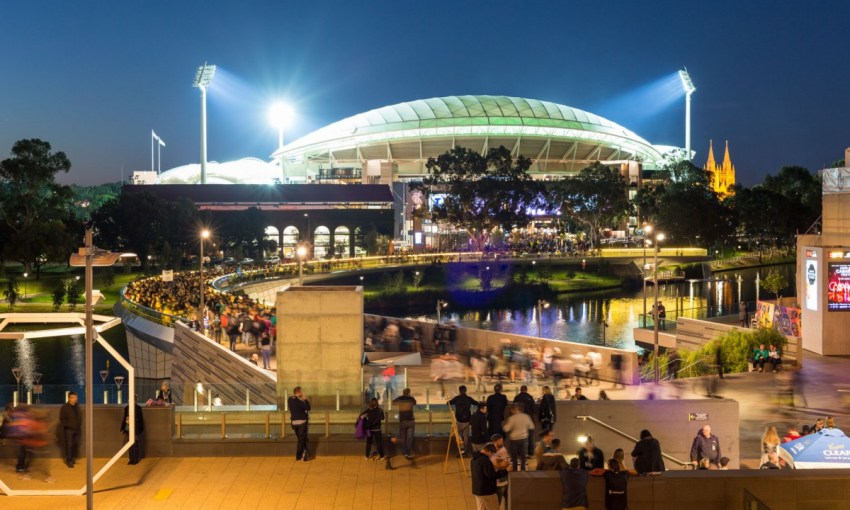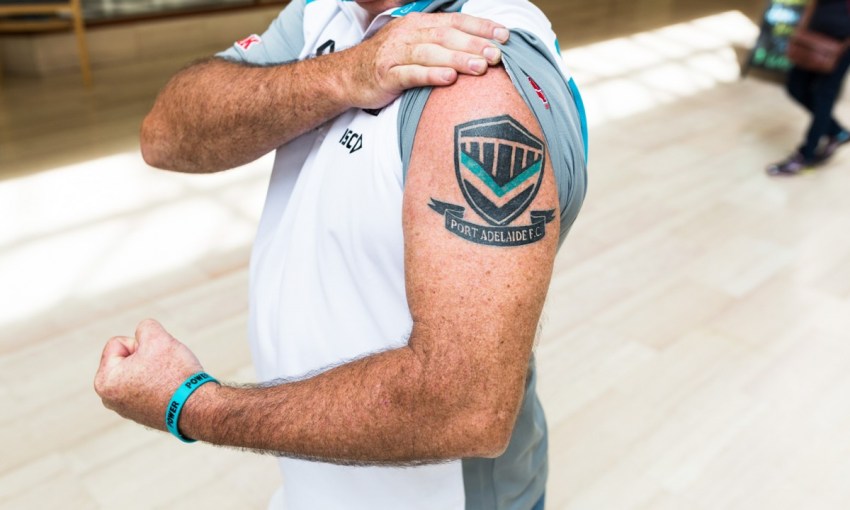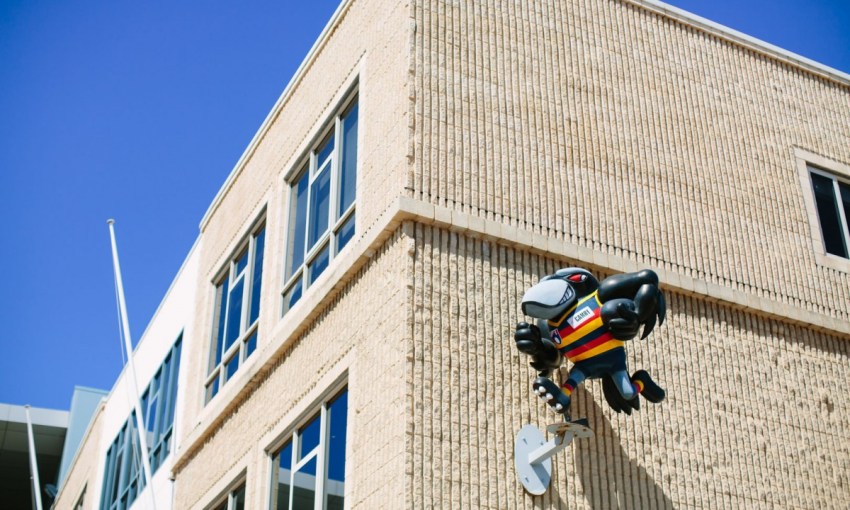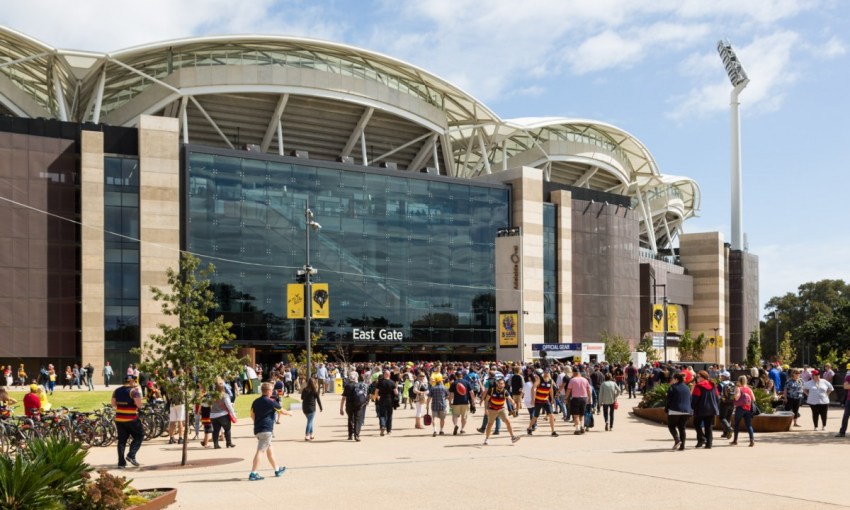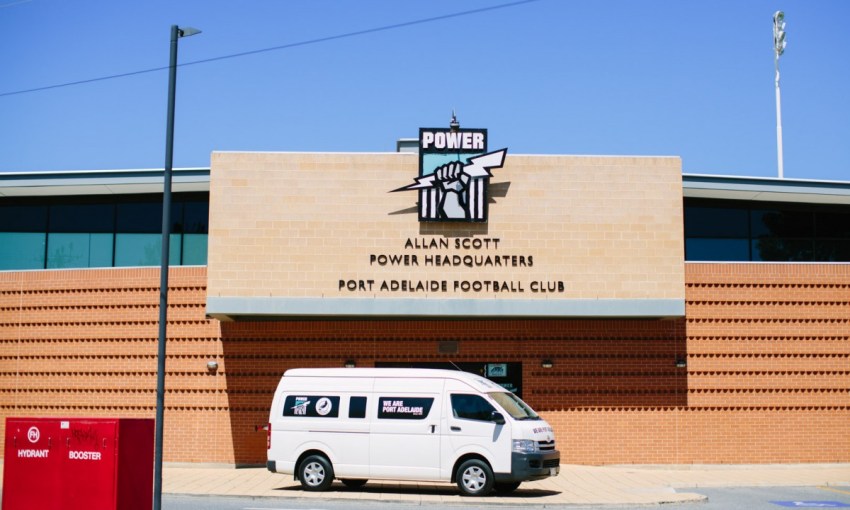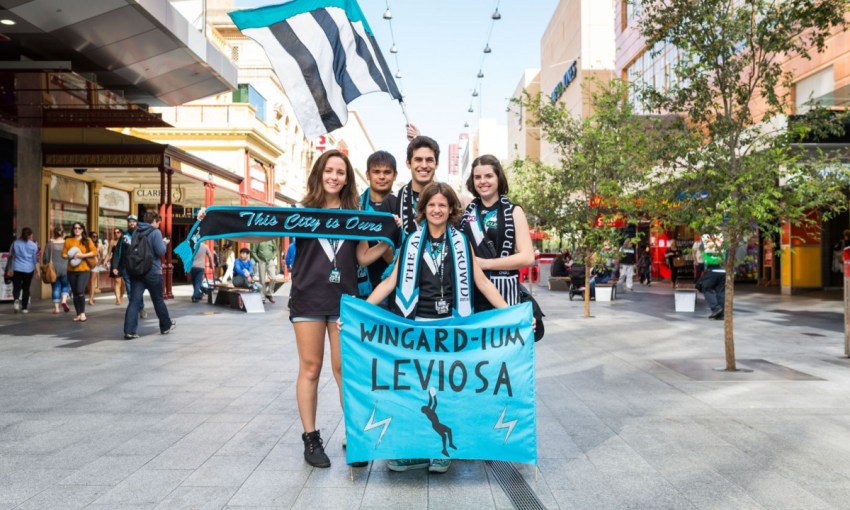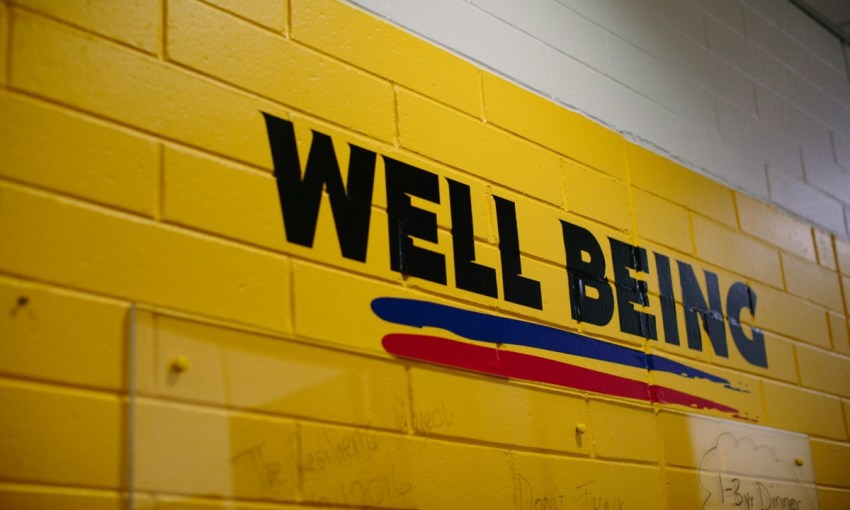Port Power and the Adelaide Crows have captured South Australia’s hearts and minds with their on-field heroics, but when your sport turns over billions of dollars annually it’s more than just a game.
More than a game
The AFL is as Australian as Prime Ministers drinking yard glasses of beer and it’s characterised by great feats of strength and daring under pressure. As such, our great game is shrouded in mythology.
But the biggest myth in the AFL isn’t about some urban legend massive mark taken in a country footy match back in the ’80s, or the way wet weather can help a low-rung team climb to the top of the ladder.
The biggest myth in the sport is that football clubs make their money from their football teams.
They may not agree on much, but there’s one thing the Port Adelaide Football Club and Adelaide Football Club are united about – the positive impact of football in the city. Both sides report increased attendance as a result of the move.
Not only that, bringing football to the city is a big economic plus for South Australia, with about $77 million of new revenue generated in the CBD in 2014 thanks to the inaugural season of AFL played there.
Premierships don’t pay the bills – in fact, they don’t pay at all. Being “the best team on the day” might be the main goal of the Adelaide Crows and The Power, but it’s not actually their main business.
Both clubs, like all in the league, are not-for-profit entities – but the more money they make the more dollars they can pour back into helping their teams win.
“We spend every waking hour trying to win, but then it’s about what are you trying to win as well,” says CEO of the Adelaide Football Club, Andrew Fagan.
“There’s multiple goals, you want to try and win a flag – number one. But we also want to be profitable so we can invest back into trying to win the flag. We want to grow our support base and engage deeply which means we’re going to invest in our community programs, we’ll invest in our membership base – try and give them new products and what they want.
“In all that we have to generate the revenue we need, so we have to have really productive corporate programs and all of this ends up as a continuous cycle and it just depends on where you decide to pick it up.”
There is a little revenue to be made from selling football. After all – that’s what fans pay to see.
Memberships and game day tickets sales are a fair chunk of the clubs’ incomes, but that’s not where the big money comes from – the kind of money that pays for a medical and therapy crew and stack of coaches to attend to a team of professional athletes as they play week in, week out for eight months a year. That kind of money comes from corporate partnerships and sponsorships.
And when you’re making money from sponsorships and partnerships, you’re not selling football – you’re selling football fans.
“One of the great things is bringing businesses to us to associate with us and partner with us,” says Andrew.
“We drive return on investment to them and help them grow their businesses and we do that through our scale. We do it through having 600,000 supporters and 65,000 members, a digital platform that is immense in scale and most importantly because those people are passionate in their support.”
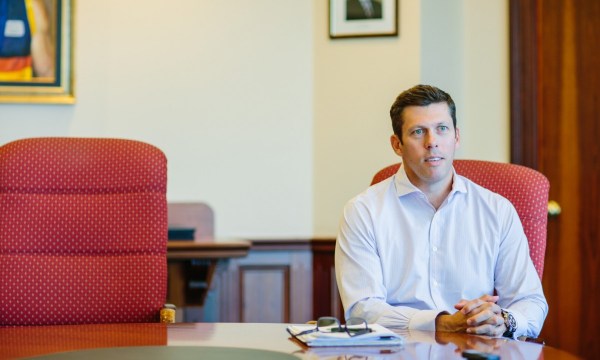
At the very heart of the business model of Australian Rules Football is the assumption that fans will do anything for their team. This kind of engagement is a marketer’s dream – theoretically, all that need be done to give your product a competitive edge over someone else’s is associate it with the right team colours.
The Power has certainly seen brands respond to their supporters’ passion.
“They’re the most engaged fans and supporters and members in the league – that’s independently researched,” says Port Adelaide Football Club CEO, Keith Thomas.
But Keith insists their partners are also investing because they hope their brand will become synonymous with the culture of the club.
“Our corporate partners have noticed and been attracted by it [the fans’ engagement] – interestingly though, the thing that attracts them first is our commitment to community and our grassroots heritage.
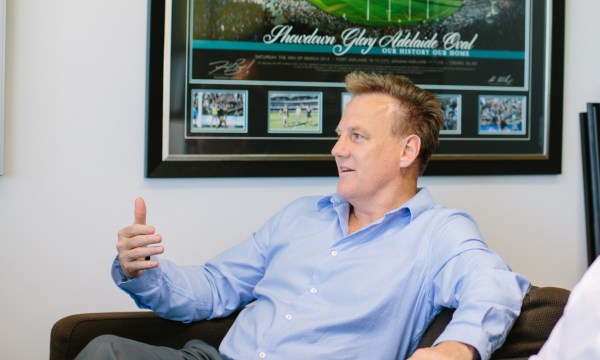
“…they start paying attention to what’s going on in regards to our relationship with those people, and that’s a very powerful double whammy if you like – the values of being committed to your community and then having a relationship with them which is really tight and then they feed into that by supporting the sorts of things that we do.”
It’s at this level – not where the money comes from, but how that support is negotiated – that no two AFL teams are alike, something particularly true of the South Australian sides.
There’s a reason beyond pure competitiveness that Port fans and Crows fans have few nice things to say to each other. Like Liberal and Labor voters, the two groups have irreconcilable differences that are fundamental to their identities and they spring from the clubs’ very different histories.
The Crows were born into the AFL. “They’re sort of like the state side,” David Shelley – a Port supporter – told CityMag.
They’ve always operated at the elite level in a national context and their structure as an organisation was purpose-built for that role. Port, on the other hand, was and is a local football club.
The Power grew from the SANFL side the Magpies, and although they disconnected between 1997 and 2011 there remained a strong bond between the elite and amateur communities. When they re-united, there was a feeling of homecoming.
Yet, this grass roots connection presents complications for the Power who can’t take on a clear cut identity like the Crows, instead having to shift gears between local footy and the big leagues with its big money.
Accordingly, Port and Adelaide approach their businesses differently. Both are striking out with brave new ideas for corporate partnerships and membership expansion, but there are stark contrasts in the way they’re making changes.
The Crows are operating within their existing business model, but employing cutting edge techniques to find more value for all involved.
“Where some of the innovation comes from, it’s often not rocket science it’s about depth of knowledge,” says Andrew.
“So, as an example, it’s not just about saying we have 600,000 supporters or 60,000 members, it’s about saying, of those members, this is how many of them are going to be buying a new car in the next 12 months.
“This is how many of those people who are going to be buying a car in the next 12 months are currently Toyota owners, these are the ones who are not Toyota owners, these are the ones who have a preference for an SUV over a sedan, these are the price points, these are the demographics of those individuals, these are the things that might incentivise them to come to you or stay with you that we can provide as a club.”
While the Crows are looking to better serve corporate partners by better understanding heartland members, Port is pushing to broaden its scope and find new markets with an ambitious move into the world’s biggest consumer cohort.
The little club that could, the underdogs from SA – those who are best known for their blue collar background and grassroots connection – is the first AFL club to strike out into China. The lateral move has been negotiated over several years, but in 2016 has come up with the goods – including a contract with China Central Television to screen some Port Power games and run a 25-part documentary series called The AFL Show.
“We spent a lot of time thinking about growth and when you look at South Australia, it’s a two-team town,” says Keith. “And largely, families are already staking their claim so you’re working at the edges. It’s a hard win to pull a kid out of a family. The same in established football states interstate.
“So why not China? Why not international? It’s hard anyway.
“If you think about it from their point of view, Chinese business trying to enter Australia – they’ve got some issues.
“They love Australia – they love the clean air, the open space, the opportunity, but they didn’t really feel close to Australians. And we thought there was something in that – if we could present ourselves as a vehicle to help them connect to Australian people… then maybe that’s a role we could play.”
The directions in which the clubs are progressing are indicative of their larger differences – the Crows are one of the best in the league at making the classic manoeuvres of AFL business, while Port has always had to do things differently to survive.
But since both strategies for survival and growth still have large membership bases at their core, Keith and Andrew have the unenviable task of massaging and improving corporate relationships with their right hand while providing authentic reasons to get members to stick around with their left.
Undoubtedly, the hope of winning a premiership is a big reason for fans to invest time and energy with a club, but it can’t be the only reason.
“You hope that you’ll have some great seasons and you know that you’ll have some poor seasons because that’s just the way it is,” says Andrew.
“But… we don’t ever want to be at a point where our supporter base, like the team on a table, can suddenly go from one of the largest supporter bases in the country to one of the smallest in the country and back up, then to the middle, and then up to the largest and down to the bottom again.
“We can’t run a business like that.”
Many supporters are one-eyed enough to stick it out through bad times, but figures show that’s not always true.
Port’s membership base dipped dramatically in the lean years it faced on field and off between 2007 and 2012 – bottoming out at 30,000, just half of the healthy 60,000-plus membership list it boasts today.
The fans need to be valued if they’re to hold on while the team is playing poorly and, once again, the methods Crows and Power use to keep everyone on side speak to their very make up.
Since Port lost their way in the last decade they’ve doubled down on how they interact with their grassroots members at the elite and administrative levels. They’ve re-imagined much of the club’s marketing to make it about the members, not the players, and have redesigned their game day experience to highlight the things that matter most to their fans.
“We’re the first to admit that for a period of time we lost our identity, we lost who we were,” says Matthew Richardson, Port’s general manager of consumer business and marketing.
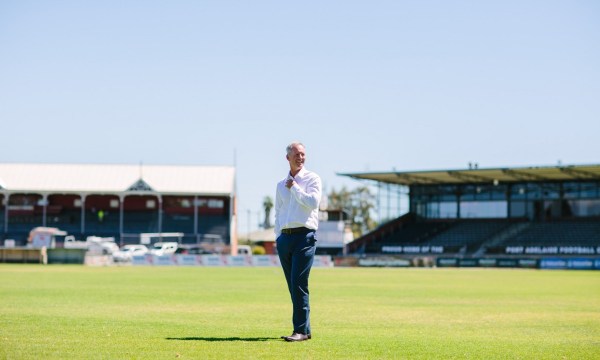
“There was a conscious shift – The ‘We Are Port Adelaide’ stuff is not new, but for us it was really significant because it was just at the time we’d put the club back together. It was a conscious message from the club to say its not about us, it’s about you.”
The effect of the change can be seen in Ports fans when they mass as a united front during home games. Thousands of fans join the march from Rundle Mall – waving flags and banners, singing and chanting as they cross to the Oval. And the energy only increases as waves of the anthem they adopted in 2014, INXS’ Never Tear Us Apart, roll across the stands just before the first bounce.
The changes resonate deeply with the fans who once more feel they’re part of a family.
“It’s something about the community of everyone just sitting there and watching us lose and sort of bonding over all of the worries – we thought that was really nice,” says Rachel McDonald, a Port supporter since she was five years old.
The Crows, meanwhile, have a less chequered past. They’ve had their fair share of off years, but nothing like Port’s near death experience. Accordingly, their membership numbers have been much steadier, and their approach to converting fans and holding on to them has been more marathon than comeback.
“At the end of the day it’s always about wanting to belong,” says Tom Rayner, the Crows’ former general manager of supporter services – who has moved into a new job since our interview. “I suppose the challenge for us is now that we have a full stadium, how do we continue to engage with our fan base outside of the traditional game basis.
“We do that by building on all those other avenues that we interact with our fan base through – the digital stuff, platforms, experiences. We just have to take it to the next level and realise we’re not necessarily competing so much with Port – if you’re an Adelaide fan you’re an Adelaide fan.
“But we are competing with all the other facets of entertainment these days. Whether its online, TV, other professional sporting codes – we need to continually strive to be bigger and better.”
But even as AFL gets bigger in every way so it can compete with the likes of Netflix and A-League soccer – taking on wider broadcast audiences, making better deals, fostering fiercer rivalries and being embarrassed by supersized scandals – it will always remain mostly the same.
AFL clubs are businesses, and they’re big ones. But before that – they’re sporting teams.
“If you think about sporting clubs in Australian culture, they play a really important role – kids enter those clubs looking for role models, looking for mentors, looking for safety, looking for fun,” says Keith.
“And it’s really important that clubs embrace that responsibility the right way. And as a high profile club, we think we have a responsibility to show the way, and that’s an important role that we can play.”
It’s more than a game, but it’s more than a business too. AFL is a part of who we are.



